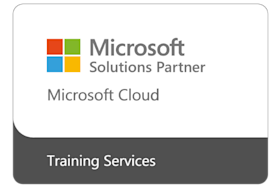What you’ll learn
At the completion of this course you should be able to:
Work with the basic components of the Windows 10 interface
Personalise the user interface
Learn how to use the Get Started app and Cortana
Work with desktop program and app windows
Use Windows to install, update and uninstall programs
Understand data storage and navigate your computer’s drives, folders and files
Work with several of the default Windows apps
Navigate the folder hierarchy and work with folders
Manage files on your computer
Understand the purpose and function of libraries, and how to manage libraries
Work with the Recycle Bin to manage deleted items
Work with Quick Access and shortcuts in File Explorer
Use the Windows search function
Manage your printer and printing tasks in Windows
Understand and work with Microsoft Edge
Manage user accounts
Work with Windows security features
Back up and restore data
Access the command line interface in Windows
Use several features to optimise the Windows operating system
Microsoft Apps at Lumify Work
Lumify Work has been delivering effective training across all Microsoft products for over 30 years. We are proud to be both Australia's and New Zealand’s first Microsoft Gold Learning Solutions Partner and the winner of the Microsoft MCT Superstars Award for FY24, which formally recognises us as having the highest quality Microsoft Certified Trainers (MCTs) in ANZ. Join more than 5,000 students who attend our quality Microsoft courses every year.
Who is the course for?
This course is designed for users who are keen to learn how to operate Microsoft Windows 10 to perform tasks that include starting applications, creating folders, copying and moving files, creating and using libraries, performing searches, and personalising Windows.
Course subjects
Starting with Windows 10
What is Windows?
Turning on the Computer
Signing in to Windows
The Desktop
The Start Menu
The Taskbar
The Search the Web and Windows Bar
Using Windows Search
Changing the Windows Search Settings
Windows Store Apps
Putting Your Computer to Sleep
Shutting Down Your Computer
Personalising the User Interface
Customising the Start Menu
Moving Tiles on the Start Menu
Changing Tile Size
Working with Tile Groups
Turning Live Tiles on and Off
Removing Tiles From the Start Menu
Pinning Apps to the Taskbar
Creating Desktop Shortcut Icons
Changing the Lock Screen
Changing the Desktop Background
Changing Your Account Picture
Help and Support
The Get Started App
Setting Up Cortana
Using Cortana
Customising Cortana
Working with Desktop Windows
Starting Desktop Programs and Apps
The File Explorer Window
Working with the File Explorer Ribbon
Using the File Explorer Ribbon
Using the File Tab
Minimising and Maximising a Window
Resizing a Window Using a Mouse
Moving a Window on the Desktop
Switching Between Open Programs
Snapping Windows
Shaking Down Windows
Working with Task View
Understanding Virtual Desktops
Creating a New Virtual Desktop
Scrolling in a Window
Closing Desktop Programs
Other Ways to Open Desktop Programs
Working with Programs
Viewing Installed Programs
Dealing With Non Responding Programs
Installing a Program
What Happens During Installation
Uninstalling a Program
Keeping Programs Updated
Data Storage on Your Computer
Understanding Data Storage in Windows
Understanding File Explorer
Opening File Explorer
Viewing Storage Devices Using File Explorer
Viewing Network Connections
Using Common Windows Apps
Starting the Mail App
Adding Accounts to Mail
Working with Mail Messages
Starting and Navigating the Calendar App
Scheduling Meetings
Opening PDFs and XPS Files in the Reader App
Using Reader
Using the Maps App
Working with Folders
Understanding Folder Hierarchy
Navigating the Folder Hierarchy
Understanding Personal Folders
Accessing Your Personal Folders
Creating a New Folder
Copying a Folder
Moving a Folder
Renaming a Folder
Deleting a Folder
Viewing the Hierarchy Path
Changing Folder Views
Working with Files
Understanding Files
Creating a Simple File
Exploring Files in Windows
Copying a File
Renaming a File
Selecting Files
Copying Multiple Files
Replacing Files
Moving Files
Copying Files to a USB Flash Drive
Setting Files as Read Only
Deleting Files
Deleting Folders With Files
Common File Types
Working with Libraries
Understanding Libraries
Displaying Libraries
Exploring Your Libraries
Creating Folders in a Library
Creating a Library
Adding Folders to a Library
Changing Library Views
Deleting Folders From a Library
Deleting a Library
The Recycle Bin
Understanding the Recycle Bin
Creating Some Sample Files
Sending Files to the Recycle Bin
Restoring Files From the Recycle Bin
Emptying the Recycle Bin
Quick Access Locations
Understanding Quick Access Locations
Adding a Location to Quick Access
Removing a Location From Favourites
Searching and Sorting Files
Understanding File Searches in Windows
Creating a Searchable File
Searching Using File Explorer
Searching File Contents Using File Explorer
Indexing a Folder
Prerequisites
This course assumes little or no knowledge of Microsoft Windows 10. However, it would be beneficial to have a general understanding of personal computers.
End User Seminars
Seminar-style training is conducted in short sessions of 1-3 hours and is ideal for groups of up to 30 students.
M365 Adoption and Training Plans
Our aim is to help educate and enable your organisation to get the best return on your Microsoft 365 investment.
Terms & Conditions
The supply of this course by Lumify Work is governed by the booking terms and conditions. Please read the terms and conditions carefully before enrolling in this course, as enrolment in the course is conditional on acceptance of these terms and conditions.

